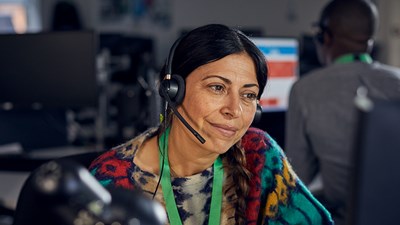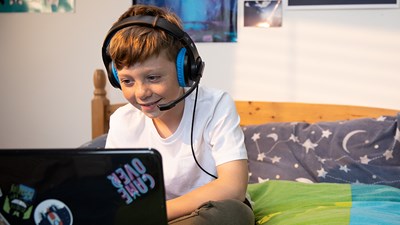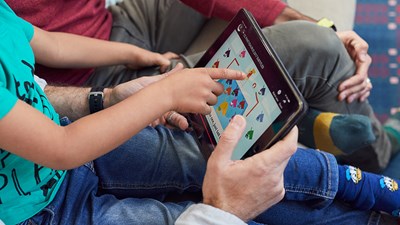What do we mean by misinformation and disinformation?
False information that is spread online is known as misinformation or disinformation. These are most commonly referred to as ‘fake news’ or ‘hoaxes’.
Misinformation is where false information is shared by accident without the intent to cause harm. For example, sharing inaccurate photos, quotes or dates online because you believe them to be true.
Disinformation is false information shared deliberately to mislead and cause harm. For example, fabricated news stories and political propaganda.
Examples of misinformation and disinformation
A hoax is an example of disinformation. It is where someone deliberately shares false information to trick someone into believing something that isn’t true.
Hoaxes can come in different forms, for example it could be a fake news story or a message
- Fabricated or false news stories about current news that might make a child feel worried or scared about what’s happening in the world. This is commonly known as ‘fake news’.
- Viral messages containing false information can easily be shared on messaging apps like WhatsApp and Messenger. If you or your child know the person who has shared it, you might be more likely to believe it.
- Deep fakes are videos where people’s faces are edited to make it look like they said or did something they didn’t.
- Memes can be used to spread unverified facts.
Hoaxes can be spread quickly as it’s not always easy to spot when something contains false information. People might read something they believe to be true and then go on to share it with others.
If you see something that concerns or confuses you, it’s important to not share it further as this can help draw more attention to them. Instead report to the app, game or site that you’ve seen it on.
An online scam is where criminals use online platforms to trick someone into sharing personal information like account logins or bank details. Scams can happen on any online platform
- Phishing emails or messages sent to a personal device asking you to provide personal information or contain blackmail demands. Sometimes these will be made to look like they’re from credible organisations or businesses.
- Promotion of products or false adverts that contain untrue claims. For example a fake competition or a product that claims to do something it can’t to encourage others to purchase it.
- Catfishing where some will pretend to be someone else to trick them into doing something.
- Competitions or quizzes where you are led to believe there is a prize.
- Identity theft where people are tricked into sharing personal information to help them hack other accounts.
An online challenge is an online activity that normally involves sharing an image or video of yourself doing a set task. They can take place on most online platforms but are most commonly on video sharing platforms like TikTok or YouTube.
Some online challenges can be fun for young people to participate in. For example, challenges that involve dancing or those that help raise money for charity. However, online challenges can become risky when they contain dangerous stunts or activities that could cause physical or psychological harm to a young person or others. Video creators can easily edit videos to make it look they did something dangerous or risky when in reality they didn’t.
Challenges aren’t always activity based, and can encourage young people to share personal or stories about themselves which could upset them and others.
Young people might feel more pressure to take part in a challenge if their friend or someone they follow online, such as an influencer or celebrity has participated. Challenges can also go viral and be seen as harmless fun, both of which can entice young people to take part.
How does it spread?
Misinformation and disinformation can spread on most online platforms that have communication tools. This includes social media and video-sharing platforms, games, forums, comment sections, email and messaging apps.
Need advice about online safety?
If you’re stuck, not sure what to do, or if you’re worried about your child, you can also contact our trained helpline counsellors on 0808 800 5000.
Childline also has lots of information about online and mobile safety that will help you and your child.
How to spot misinformation online
It’s important to remind your child that not everything they see online is real and encourage them to always check before they share. Here are some things you should encourage them to do:
If your child sees something online that worries or upsets them encourage them to not share. Remind them they can speak to you, another trusted adult, or a Childline Counsellor if they have questions about something they’ve seen.
If they come to you, and you aren’t sure, you could try speaking to your child’s teacher or contact the NSPCC Helpline to speak to an advisor.
Always check the source and the date of the information. Does it come from a reputable organisation that they’ve heard of? Could the image or video have been edited? Encourage them to check different sources like other news or fact-checking websites such as Full-fact or Snopes and compare information.
Also think about whether it conflicts with your own knowledge of the topic.
Remind them to never take part in a challenge that involves stunts or that could cause them or others physical or emotional harm.
Having regular conversations with them about what they’re doing online can help to open up the conversation about what is and isn’t real online. Try asking them about some of the challenges they take part in with their friends or ask them to show you their favourite online challenge.
Often online platforms will show us content based on what we like. Try to encourage your child to look at a range of different resources to learn and access new information.
Reporting hoaxes, scams and online challenges
If you or your child comes across a hoax, scam or risky online challenge you should report it directly to the platform to try and get it removed. Find more information on reporting here.
If you or your child has been scammed online you should report it to Action Fraud.





